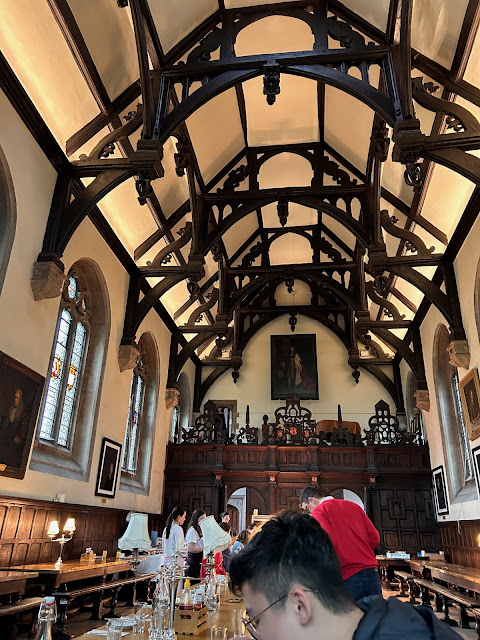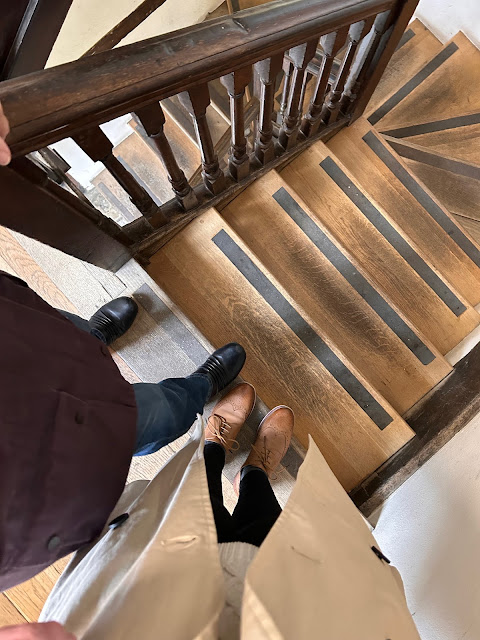Everyday begins with breakfast in the dining hall. It's a true Oxford experience. A great way to get the day started with a plate of fried eggs, tomato, baked beans, hash brown, bacon, a cup of Earl Grey, and some fruit. Like a typical day in college, people are buzzing to and fro getting set for a day with some schedule ahead.
The journey up to Jericho had a nice long pit stop at Gail's Bakery for coffee. The essential of everyday is time in a coffee shop. I fill pages in my journal as I do every morning. It's something I do every day normally, so it's the most natural thing to me. Have you tried journaling each morning? It's a wonderful way to get thoughts out, process through thoughts and ideas, write out prayers, and sometimes come to answers and conclusions by way of exploring them.
Wanders by foot are always the best. Along the way there's so much to see. Shops, buildings, post boxes, architecture, trees and blooms, all on the way to the eventual lunch at a favourite Rickety Press for a burger. Good fuel before our tour of the Oxford University Press. I had taken this tour many years ago, and it was fun to re-visit the huge site to visit the museum, library, hang out in the employee lounge area, and make friends with an employee who led us out via the usually restricted main quadrangle and the main gate - I felt so official and I love getting to see the insides of places you don't normally get to access.
The Oxford University Press location employs about 3,000 people and has a library they can all use, a gym, coffee bar, big cafe, lounge, and very cool modernized interior spaces within these old buildings. The OUP is a department of the University of Oxford and began its printing in the 15th century. The current location has been there since 1830. Before that, it was located on Broad street first in the Sheldonian Theatre from 1669 - 1713 and then the Clarendon Building from 1713 - 1830.
In 1675 the King James Version of the Bible is printed at Oxford for the first time. The Oxford English Dictionary began in 1884 and was completed in 1928. J.R.R. Tolkien worked for the OED and it's so fun to see his handwritten entries for the "W's" as he worked on the etymology of words in 1919.
Ask me something I love about Oxford? It's all the bookish history everywhere. With so many things to explore and discover, I am always eager to learn more and feel more inspired by it all.



















.JPG)

















